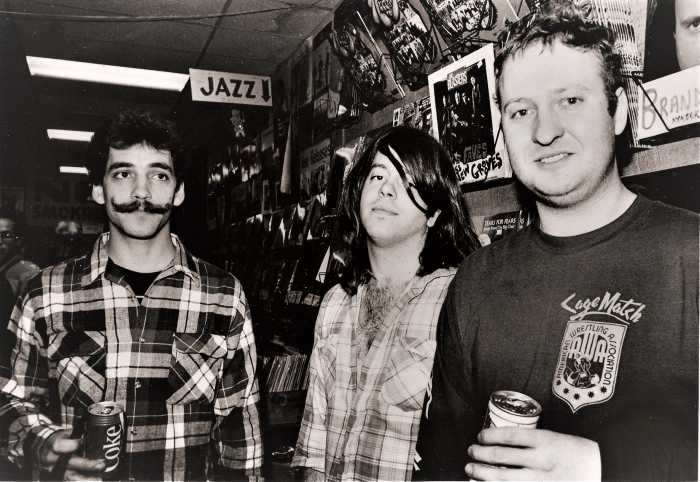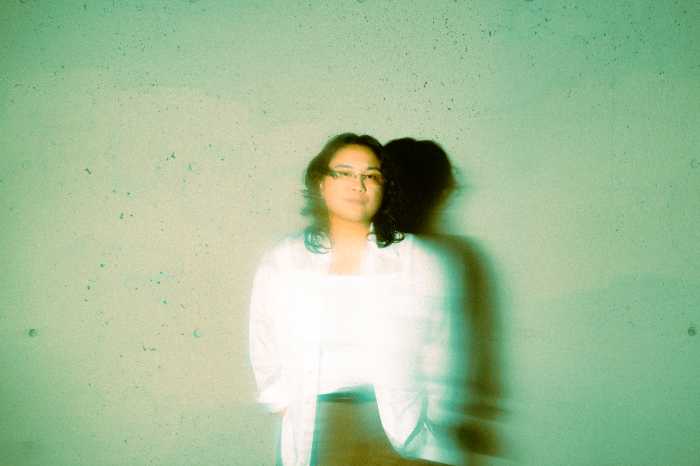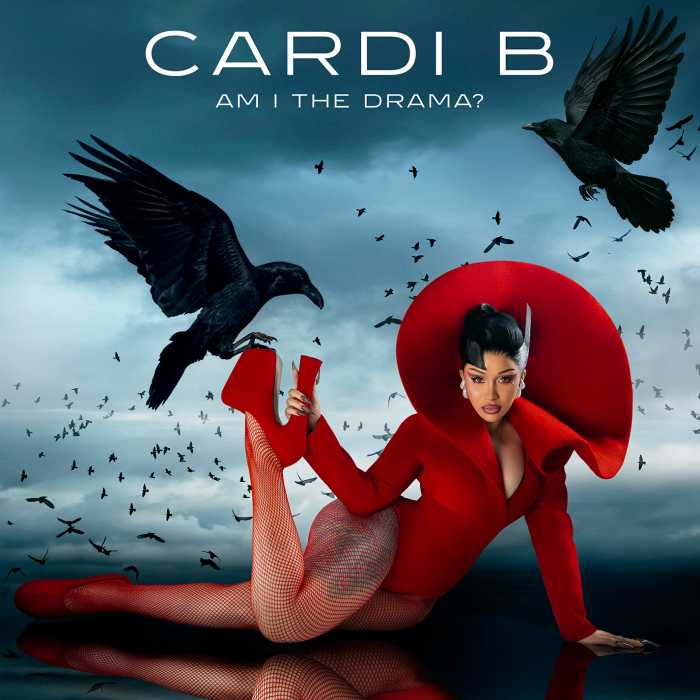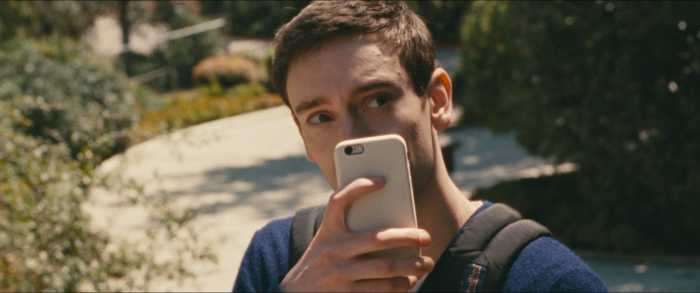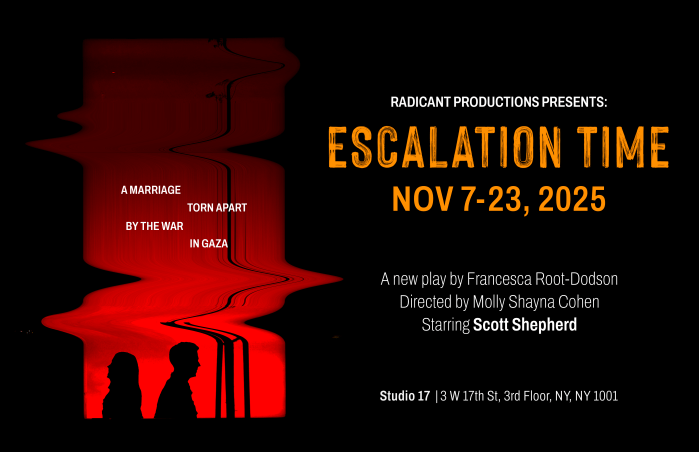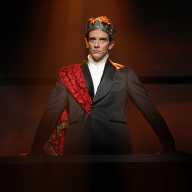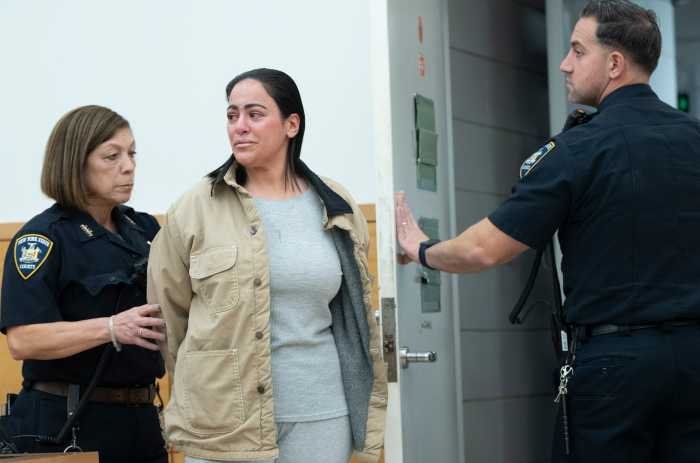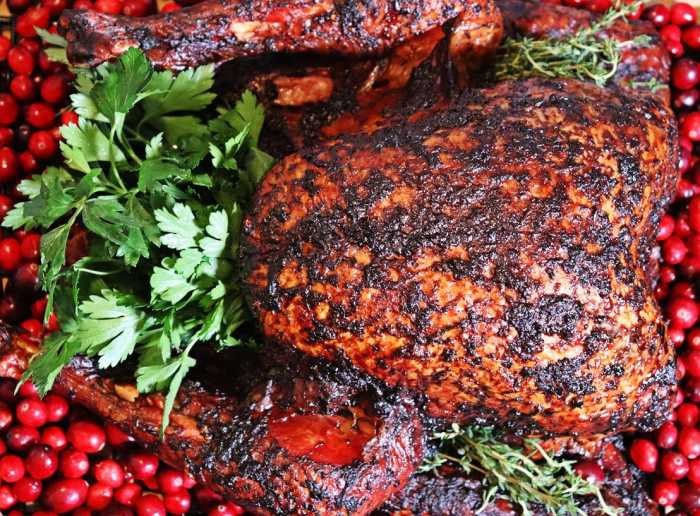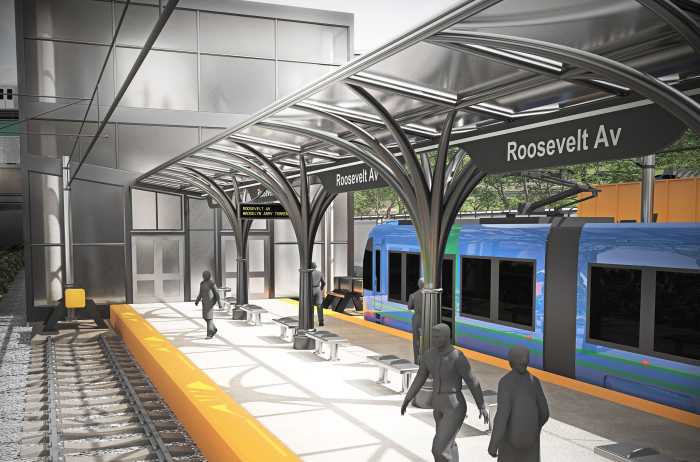Though it may be considered blasphemous to review a New York performance by a Boston group amidst the Super Bowl showdown between the Giants and the Patriots, jazz has never been so proscribed by geography. The Fringe are popular in New York; they represent a longstanding tradition of jazz musicians studying at Beantown's Berklee School of Music or New England Conservatory and then moving to the Big Apple to make their mark. A New York gig by the Fringe is like your favorite uncle coming to visit.
The group's January 25 performance at Park Slope's Tea Lounge – a hipster joint illuminated mostly by the glow of many a MacBook – was to be especially noteworthy. The billing had saxophonist George Garzone and drummer Bob Gullotti joined by original Fringe bassist Richard Appleman for the first time in more than two decades — the bass chair having since been filled by John Lockwood, himself no slouch.
Former trio, now duo, perform at Park Slope's Tea Lounge.
But upon arrival, the hand-written chalkboard outside the club declared this to be the Fringe Minus One. What happened to Appleman? Or Lockwood, for that matter? After the gig, Garzone explained that the club's booker had obtained information on the band online but it seemed her sources were slightly out-of-date. And before the first set, Garzone, tongue-in-cheek, announced to the crowd that Lockwood was unavailable because he had just gotten the gig with Prince.
So after all the buildup, this show was just a sax-drum duo. But wait, this is the format that formed the basis of arguably the most celebrated avant-garde session in history – John Coltrane's “Interstellar Space” with drummer Rashied Ali. Since that album in 1967, this arrangement has been used liberally for its pyrotechnic potential and focus on melody and rhythm, instead of jazz's usual harmony.
Admittedly there are limits to this archetype, especially when stretched across two long (35- and 20-minute) improvised pieces. The layout goes something like intro-duet-solo-duet-solo-duet – for as long as anyone can stand it. But within this limitation, both saxophonist and drummer have a remarkable opportunity to explore the various emotional and dynamic tenors of their instruments, as well as their respective roles. Garzone and Gullotti's relationship, nearly 40 years old, was an ideal stimulant to this type of intense conversation.
Garzone, an esteemed educator in both cities, was a marvel for the seeming effortlessness with which he burbled, squawked, soared, preached, and implored, all with a force that rendered a microphone superfluous. Gullotti's contribution, apart from an organic mix of the hyperactive and cerebral, was architectural. His support of Garzone's ruminations kept the proceedings from moving too far in either a blues jam direction or an analytical exploration of texture.
The Giants' Tom Coughlin himself wouldn't have been able to stop this offensive tandem.

